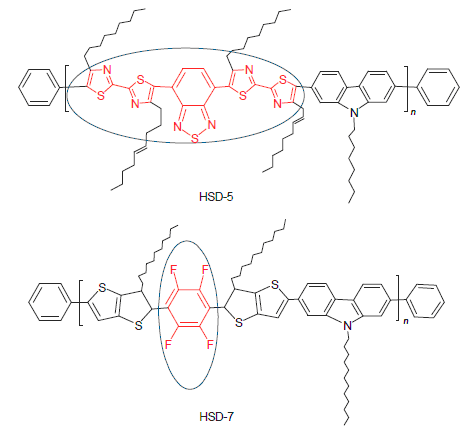| [1] (a) Liu, Y.; Zhao, J.; Li, Z.; Mu, C.; Ma, W.; Hu, H.; Jiang, K.; Lin, H.; Ade, H.; Yan, H. Nat. Commun. 2014, 5, 5293/1. (b) Chen, J.-D.; Cui, C.; Li, Y.-Q.; Zhou, L.; Ou, Q.-D.; Li, C.; Li, Y.; Tang, J.-X. Adv. Mater. 2015, 27, 1035.
[2] Meng, Q.-B. Acta Chim. Sinica 2015, 73, 161 (in Chinese). (孟庆波, 化学学报, 2015, 73, 161.)
[3] (a) Qin, R.-P.; Li, W.-W.; Li, C.-H.; Du, C.; Veit, C.; Schleiermacher, H F.; Andersson, M.; Bo Z.-S.; Liu Z.-P.; Inganas, O.; Wuerfel, U.; Zhang, F.-L. J. Am. Chem. Soc. 2009, 131, 14612. (b) Lei, T.; Wang, J.-Y.; Pei, J. Acc. Chem. Res. 2014, 47, 1117. (c) Coughlin, J. E.; Henson, Z. B.; Welch, G. C. Acc. Chem. Res. 2014, 47, 257. (d) Qin, R.-P.; Jiang, Y.-R.; Ma, H; Yang, L; Liu, H.-Z.; Chang, F.-G. J. Appl. Polym. Sci. 2013, 129, 2671. (e) Qin, R.-P.; Song, G.-L.; Jiang, Y.-R.; Bo, Z.-S. Chem. J. Chin. Univ. 2012, 33, 828 (in Chinese). (秦瑞平, 宋桂林, 蒋玉荣, 薄志山, 高等学校化学学报, 2012, 33, 828.) (f) Liu, Z.; Xu, F.; Yan, D.-D. Acta Chim. Sinica 2014, 72, 171 (in Chinese). (刘震, 徐丰, 严大东, 化学学报, 2014, 72, 171.)
[4] (a) Gong, X.; Li, C.; Lu, Z.; Li, G.; Mei, Q.; Fang, T.; Bo, Z.-S. Macromol. Rapid Commun. 2013, 34, 1163. (b) Chen, Y.; Wan, X.; Long, G. Acc. Chem. Res. 2013, 46, 2645. (c) You, J.; Dou, L.; Yoshimura, K. Nat. Commun. 2012, 4, 1446. (d) Fan, X.-C.; Wang, F.; Li, X.-C.; Chen, Y.; Lai, W.-Y.; Huang, W. Chin. J. Org. Chem. 2014, 34, 2027 (in Chinese). (范晓春, 王芳, 李祥春, 陈垚, 赖文勇, 黄维, 有机化学, 2014, 34, 2027.)
[5] (a) Wang, X.; Sun, Y.; Chen, S. Macromolecules 2012, 45, 1208. (b) Uy, R. L.; Price, S. C.; You, W. Macromol. Rapid Commun. 2012, 33, 1162. (c) Li, Y.-F. Acc. Chem. Res. 2012, 45, 723. (d) Du, C.; Li, W.; Li, C. J. Polym. Sci., Part A: Polym. Chem. 2012, 51, 383.
[6] (a) Lei, T.; Wang, J.-Y.; Pei, J. Chem. Mater. 2014, 26,594. (b) Hu, X.-L.; Zuo, L.-J.; Nan, Y.-X. Synth. Met. 2012, 162, 2005.
[7] (a) Brocks, G.; Tol, A. J. Phys. Chem. 1996, 100, 1838. (b) Ajayaghosh, A. Chem. Soc. Rev. 2003, 32, 181.
[8] (a) Shi, Q.; Fan, H.; Liu, Y. Macromolecules 2011, 44, 4230. (b) Shi, Q.; Fan, H.; Liu, Y. J. Phys. Chem. C 2010, 114, 16843.
[9] Zhang, X.; Köhler, M.; Matzger, A. J. Macromolecules 2004, 37, 6306.
[10] Qin, R.-P.; Bo, Z.-S. Macromol. Rapid Commun. 2012, 33, 87. |
